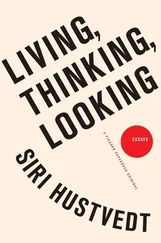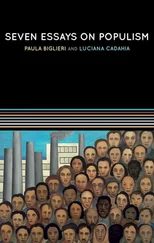In Bradley Headstone, the reader is presented with a character who suffers from what would now be called “psychosis.” The language of psychiatry has changed over the years, and diagnosing a character in a novel is naïve at best, but Headstone’s madness fascinates me because it broadly depicts clinical realities that have always been present in some forms of insanity. In his book Aggression in Personality Disorders and Perversions, Otto Kernberg states it simply: “There is a profound sense of loss or dispersal of identity in psychosis.” Of course, Our Mutual Friend as a whole expresses both a profound sense of loss and a dispersal of identity, but it is not. a psychotic text; it treats these losses coherently. Dr. Daniel Dorman, in his narrative account of a single schizophrenic patient, Catherine, relates that after she had sat in stony silence for nearly an entire session she announced just before it ended, “I am Humpty Dumpty, in pieces, and there is no way to put broken eggshells back together again. I am cracked up.” Catherines silence is as important as her final words. The shattered self must raise defenses or die, and words to express this state do not come easily. In Bradley Headstone, Dickens gives the reader a man whose plural inner turmoil brings him to violence and then tears him apart.
Headstone suffers from a radical disconnection between his inner and outer self, his feelings and his words. Despite the monstrous struggles that are being waged inside him, his schoolteacher persona is dull, dry, and emotionless. This bifurcation between inner disturbance and external deadness also has a clinical dimension. One of my favorite stories about the English pediatrician and psychoanalyst D.W. Winnicott is told by M. Masud R. Khan in his introduction to Winnicott’s book Holding and Interpretation. In 1971, near the end of his life, Winnicott met with a group of Anglican clergymen. The question they asked him was simple. They wanted to know how to distinguish between an ill person who needed psychiatric help and a person who could be helped by their counseling. Dr. Winnicott didn’t answer immediately, but after some thought, he said: “If a person comes and talks to you and, listening to him, you feel he is boring you, then he is sick, and needs psychiatric treatment. But if he sustains your interest, no matter how grave his distress or conflict, then you can help him alright.”
The brilliance of this comment is that it unearths a truth about many people who are mentally ill: In their preoccupation with what is happening inside them, they are walled off from other people, and this barrier prevents them from engaging another person in genuine conversation. The speaker’s lack of connection inevitably creates boredom in the listener. Headstone, like Podsnap, like countless other characters in the novel, is shut off from language as a means of communication with another person. The symbols of paternal authority Dickens indicts with such fury reveal themselves through the telling adjective he uses to incriminate the letters: dry. Everybody knows what a dry text is — one that has left out feeling, one that bores you stiff because it doesn’t speak to anything human, hides the obvious under obfuscation, or is simply incomprehensible.
The exponent [Headstone] drawling on to My dear Childern-err, let us say for example about the beautiful coming to the Sepulchre; the repeating of the word Sepulchre (commonly used among infants) five hundred times and never once hinting what it meant.
In this evocation of Headstone’s pedagogy, Dickens typically wrings every possible meaning out of the word Sepulchre. The reader knows the word means tomb, the receptacle for a dead body. The reader also knows that in the story being told, the tomb is empty when the women of the “beautiful coming” arrive. For the children who don’t know the word’s meaning, the letters themselves are vacant symbols, more verbiage coming from the mouth of their teacher. Sepulchre also points to the exponent issuing the nonsense, Headstone, a word that signifies a marker for the dead, a mere name aboveground announcing what once existed but has now become mere fragments of flesh and bone in the earth. Furthermore, the schoolmaster’s lessons, like the word Centralization, disguise a “terrible event.” The dull rhythms of his droning instruction become the frame for Headstone to relive his assault on Eugene, whom he has beaten to a bloody pulp and left for dead: “As he heard his classes he was always doing it again and improving on its manner, at prayers, in his mental arithmetic, all through his questioning, all through the day.” Language is a veneer, beneath which lies pure inarticulate rage.
Headstone is caught in a treadmill of obsession, compelled to relive his crime again and again. The word mechanical is used several times to describe the schoolmaster, signaling a growing resemblance to machinery and the inanimate. Repetition is meaning. Without it there is no memory, no recognition, no language, but compulsive repetitions that won’t allow for difference may also be a sign of sickness. In Beyond the Pleasure Principle, Freud first made the connection between the human urge to repeat and the death instinct. In the essay, he notes what every parent knows: Children never tire of playing the same games and hearing the same stories over and over and have little tolerance for even the slightest change. For Freud, this voracious appetite for identical repetition is the child’s way of mastering his environment, but in adulthood the desire for this disappears. In his patients he noticed that their need to repeat childhood events “disregarded the pleasure principle in every way.” The compulsion to return to the same thing time and again was actively self-destructive. In Our Mutual Friend, repetition without variation is both pathological and moribund. A character like Podsnap, whose entire existence is summarized in the routine “getting up at eight, shaving close at quarter past, breakfasting at nine, going to the City at ten, coming home at half past five, and dining at seven,” is the bourgeois version of Headstone’s insular cycle of doing it again. The rhythm that allows no change, no difference, is one that seeks to stop time, and stopping time means death. The teacher has lost the possibility of an ongoing story because he is trapped in the trauma of a single moment and is never released.
Headstone is the perpetrator of a crime against another person, not the victim, but his inner savagery partakes of both sides, not unlike Dickens’s incarnation as both Sikes and Nancy. “The man was murderous and he knew it. More, he irritated it with a kind of perverse pleasure akin to which a man has in irritating a wound upon his body.” Torturer and tortured occupy the same psychic ground. In the end, the schoolmaster’s body can’t bear the strain, and it erupts. He loses control of his movements and suffers from spasms, nosebleeds, and then seizures, epileptic fits he can’t remember and which leave him completely drained. He loses control of his body in space, and his amnesia disrupts all sense of time. True to Dickens’s storytelling, the ravages of this explosive inner campaign aren’t confined within Headstone. They move outward onto the larger canvas of the novel and are acted out through others in disguise, doubling, and mistaken identity. This is the written-ness of Dickens, the dreaming, overdeter-mined quality of his work. Once unleashed, a Dickensian theme is unstoppable; it spreads and bleeds from one character and one story within the story into another.
In order to commit the crime, Headstone disguises himself as Rogue Riderhood, the “Waterside Character,” and in these clothes he appears to be not less but more himself: “And whereas in his schoolmaster clothes he usually looked as if he were in the clothes of some other man, he now looked in the clothes of some other man or men, as if they were his own.” He “owns” these clothes because they suit what has been hidden, the suppressed other. The inside has come out. The word Other becomes a signal in the novel that boundaries are tumbling and people are going to pieces. Riderhood dubs the schoolmaster “T’Otherest.” He arrives at the name through three men he associates in his mind: Lightwood, “The Governor”; Wrayburn, “T’Other Governor”; and Headstone, “T’Otherest Governor,” who then becomes simply “T’Otherest.” T’Otherest is an apt name for a double, but it also describes the extremity of Headstone’s position and alludes to his slide toward verbal incoherence and eventually T’Other World, a phrase Riderhood also uses — the place of death and decay. The two men serve as mirror selves, and this reflective quality is also a form of confusion, not only of identity — which one is which — but of an erosion of the line between inside and outside. When Riderhood sees the disguised Headstone float by him on a barge, he makes a remark that reverberates with the pronominal play in the book as a whole: “Never thought myself so good-looking afore.” I am you. You are I.
Читать дальше












